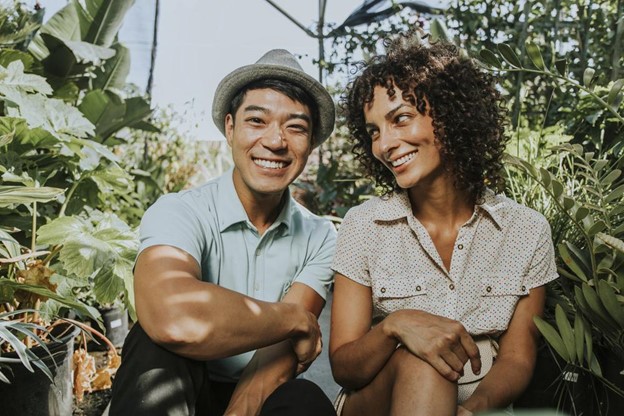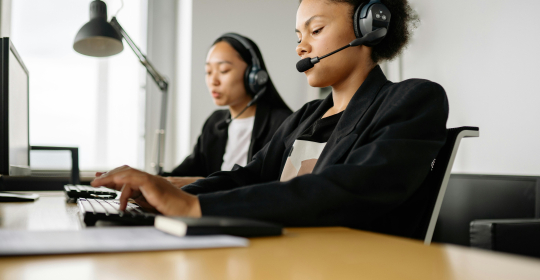Have you ever wondered what your body language in photos says about you? It can reveal a lot about your personality, emotions, and confidence level. The way you stand, tilt your head, and even smile can all provide insight into who you are as a person.
If you want to dig deeper into the meaning of body language in photos, you are in the right place. From the definition of body language to the subtle cues in a person’s body language that can give away their true feelings, this article will help you understand how to interpret the messages behind poses captured in photos. Read on to discover more!
What is body language?
Body language is a set of conscious and unconscious physical movements, postures, and facial expressions that can communicate a wide range of attitudes and feelings. Happiness, sadness, and other emotions shown on the Depositphotos website can also be conveyed through body language.
Is body language important in communication?
Since 90% of communication is nonverbal, body language plays a crucial role in understanding the true meaning behind someone's words. According to Albert Mehrabian, a body language researcher, 55% of human communication is nonverbal, 38% is vocal, and 7% is spoken. Therefore, how you present yourself through your body language can greatly impact how others perceive your message.
The meaning of body language in photos
Let’s find out what body signs in photos can reveal about one’s personality, emotions, and confidence level.
Posture
The way a person stands or sits in a photo can reveal a lot about their confidence or state of mind at that moment. A confident person is likely to have good posture, standing tall with their shoulders back. At the same time, someone who is feeling insecure or stressed may hunch over or cross their arms protectively.
Posture can also convey power dynamics in a group photo. For example, a person in the center with an open and expansive posture will be perceived as the leader. On the other hand, those who are standing with a closed posture can be seen as more subordinate.
Also, several studies have shown that the way you hold your body influences how you feel and behave. Adopting an expansive pose, even for a short time, can make you feel more powerful and in control.
Facial expressions
Facial expression is no less important than posture. If your poses only hint at how you feel, your facial expression will make it clear. Combining the two, however, can communicate a powerful message.
Let’s start with eye contact. Direct gaze is often seen as a sign of confidence. Turning your eyes to the side or downward can signal shame, discomfort, or uncertainty. Your eyebrows can also play a big role in conveying emotion. Furrowed brows can indicate anger, one raised eyebrow can mean confusion, and both raised eyebrows can express surprise or interest.
Next, your mouth. A big, wide smile will tell people that you are positive, friendly, and approachable, while the corners of your lips looking down will communicate your sadness. A tight-lipped smile is a sign of disappointment. However, just tightly pressed lips may indicate a lack of satisfaction or anger.
Gestures
A gesture is a movement of the hands, arms, or head. In a photo, they most vividly convey emotions. For example, holding your head up will communicate confidence, while looking at the ground will indicate low self-esteem or sadness. Tilting your head toward the other person shows interest or attentiveness. Turning the head away can signal disinterest, anger, or irritation.
The popular arm over the shoulder can indicate some kind of closeness or protection. Hands hidden behind your back can suggest a lack of transparency. Crossing your arms in front of your chest is often considered a defensive position. Finger pointing can be used to accuse another person.
If you put your hands in your pockets, it signals that you have a closed-off attitude. Either you're uncomfortable with someone or don't want to engage with them. Holding your own hand or hand clasping is a sign of insecurity. By making this gesture in a photo, you are trying to comfort yourself.
Mirroring
Mirroring involves copying another's body language or other qualities. It often happens subconsciously because we like somebody or as a way to establish a closer connection with them.
So, if family members, friends, or partners mirror each other in photos, it’s a sign of their strong bond. Analysis of couples' body language photos shows that mirroring can indicate a deep level of understanding and intimacy between them.
How different are female and male body language photos?
Many people believe that modern female body language in photos stems from centuries of cultural biases and expectations. Back in the day, women were expected to be more submissive; therefore, their gestures were often more subtle and less assertive compared to men.
For example, women might tilt their heads slightly to the side when listening. At the same time, men maintain more direct eye contact and upright posture. Also, women may take up less space than men and lower their shoulders more.
In conclusion, men's body language is often perceived as more confident and dominant, while women's body language is seen as more accommodating. It's important to remember, though, that this is the common perception because of centuries of societal pressure, gender differentiation, and sex segregation. However, in today's world, we can see more people acknowledging and rejecting toxic masculinity and femininity and embracing the fluidity of gender expression and individuality. As the distinctions are becoming less rigid, with many individuals expressing themselves in ways that defy traditional norms, body language in photos is increasingly about personal style and self-expression rather than strictly adhering to gendered expectations.
Quick tips to make body language photos funny, serious, or heartwarming
- Strike a silly pose or make an exaggerated facial expression to make a photo funny;
- Maintain proper posture and a neutral facial expression to take a serious photo;
- Use physical touch or a warm smile and eye contact to create a heartwarming photograph;
- To appear relaxed in a picture, use open body language such as leaning back or casually crossing your arms;
- Furrow your brows, clench your fists, or stand with your arms crossed to show you’re angry;
- To convey surprise, try widening your eyes and dropping your jaw or slightly opening your mouth.
To wrap up
Mastering body language is not easy. It can take a lot of studying the meaning of body language in photos, practice, and self-awareness. However, once you can control your body language, you'll be able to communicate messages in photos that serve you. Ultimately, helping you achieve your goals. And if you'd like to explore your personality further through personality tests, you can check here: Personality Tests: A Complete Guide'






